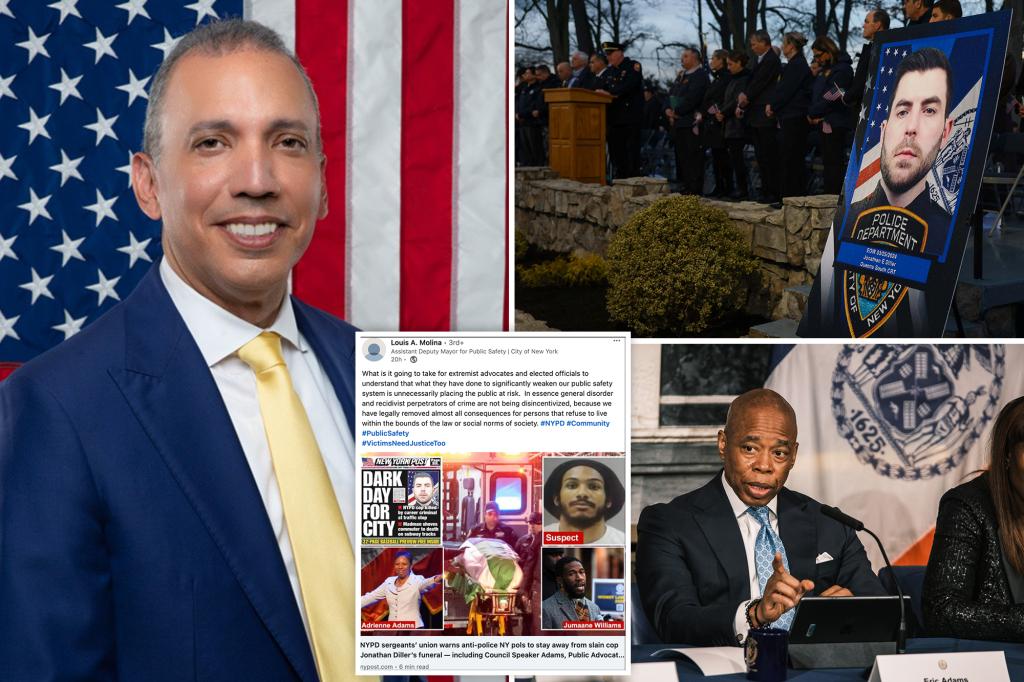Assistant Deputy Mayor Louis Molina criticized the City Council on LinkedIn, calling them extremist and blaming their policies for contributing to disorder and recidivism in the wake of a police officer’s death. His post, which was liked by numerous law enforcement and City Hall employees, highlighted the weakening of public safety systems due to the removal of consequences for those who refuse to follow the law or societal norms. The post referenced a story about the Sergeants Benevolent Association president criticizing councilmembers for interfering with the funeral of Officer Jonathan Diller.
The SBA president, Vincent Vallelong, sent a memo to members accusing anti-police local lawmakers of being morally responsible for Officer Diller’s death. Specifically naming Council Speaker Adrienne Adams and Public Advocate Jumaane Williams, Vallelong accused them of endangering law enforcement officers. This pointed attack against city officials reflects growing tensions between law enforcement and City Council members in New York City. These remarks come as budget negotiations are set to begin, and Mayor Eric Adams has taken a more reserved approach in addressing the City Council’s decisions thus far.
Mayor Adams has previously refrained from publicly criticizing the City Council, even when they voted to override vetoes on contentious issues like the How Many Stops Act and a ban on solitary confinement earlier in the year. In contrast, Louis Molina’s post expressed strong disapproval of the council’s actions, without specifying which policies or laws he believed contributed to increasing recidivism or disorder in the city. City Councilman Lincoln Restler countered Molina’s claims by stating that Molina was actually responsible for weakening public safety systems by pushing towards a federal takeover of the jail system and eliminating programs that reduce recidivism.
The public disagreement between city officials and law enforcement highlights the complex and fraught relationship between these parties in New York City. The tensions between the City Council and the police department have been escalating, with accusations flying from both sides regarding public safety and policy decisions. The differing approaches and viewpoints from key figures in the Adams administration, such as Molina and the mayor himself, reflect broader divisions within the city government. The ongoing conflict could have significant implications for future policy decisions and collaborations between law enforcement and city lawmakers in addressing public safety concerns.
City Hall did not immediately respond to requests for comment on the situation, signaling potential challenges in resolving these disputes and finding common ground moving forward. The lack of communication between city officials and the Adams administration suggests a need for greater dialogue and cooperation to address the underlying issues impacting public safety and the criminal justice system in New York City. As budget negotiations progress and tensions continue to rise, finding ways to bridge these divides and work towards shared solutions will be crucial in maintaining public safety and addressing the concerns raised by both law enforcement and city lawmakers.


